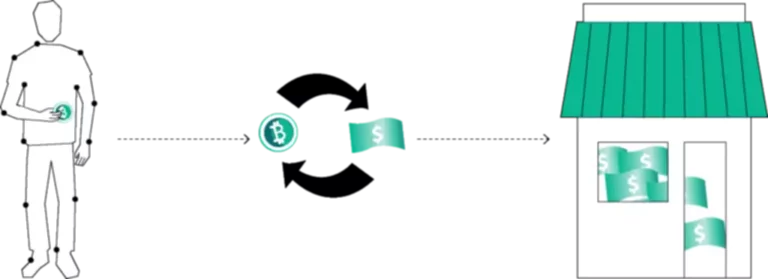How To Calculate Average Sales l Sisense
Having a months-long average sales cycle to sell an $11/month tool may not make sense. If you offer incredibly niche software aimed at B2B companies, your prospects may take longer to evaluate how your service meets their needs. The more complex the software, the longer it’ll take your potential customers to recognize the full value of the product, which leads to a lengthier sales cycle. Without clear visibility into how long it takes for leads to become customers, you risk inaccuracies in revenue forecasts that stunt your growth trajectory and erode investor trust.
The metric is helpful in a Software as a Service business, for example, where revenue is generated from recurring subscriptions rather than one-time purchases. In such cases, calculating the ASP can provide insight into how much customers are willing to pay over the long term. In addition to being limited to only credit sales, net credit sales exclude residual transactions that impact and often reduce sales amounts. This includes any discounts awarded to customers, product recalls or returns, or items re-issued under warranty. This metric should exclude cash sales (as those are not made on credit and therefore do not have a collection period). A lower average collection period is generally more favorable than a higher one.
Sales Win Rate: How to Define, Calculate, and Improve It According to the HubSpot Sales Team
To ensure the accuracy of your ASP calculations, it is essential to have reliable and up-to-date data on your sales revenue and corresponding unit sales. You should also double-check and validate your calculations against previous periods to detect abnormalities or discrepancies. Understanding your ASP can help you identify areas where you may need to adjust your operations to improve profitability, such as reducing production costs or increasing sales volume. Although cash on hand is important to every business, some rely more on their cash flow than others.
Similar companies should produce similar financial metrics, so the average collection period can be used as a benchmark against another company’s performance. When calculating average collection period, ensure the same timeframe is being used for both net credit sales and average receivables. For example, if analyzing a company's full year income statement, the beginning and ending receivable balances pulled from the balance sheet must match the same period. For the formulas above, average accounts receivable is calculated by taking the average of the beginning and ending balances of a given period. More sophisticated accounting reporting tools may be able to automate a company's average accounts receivable over a given period by factoring in daily ending balances.
Companies prefer a lower average collection period over a higher one as it indicates that a business can efficiently collect its receivables. For example, the banking sector relies heavily on receivables because of the loans and mortgages that adjusting journal entries it offers to consumers. As it relies on income generated from these products, banks must have a short turnaround time for receivables. If they have lax collection procedures and policies in place, then income would drop, causing financial harm.
- Another aspect of presentations is offering interactive sessions with prospective clients where the potential client gets shown the product or service in real-time.
- Perhaps the company may be allowing customers with poor credit to make purchases on credit.
- Maybe you need to take into account the time a proposed deal needs to get approved by someone in another department.
- The investment community will analyze the average selling price to try to make conclusions about a product or service, a business, or a market.
It suggests that the company's cash is flowing in at a reasonably efficient rate, ready to be used to generate new business. It suggests how efficient the company's collections department is, and the degree to which the company is maintaining customer satisfaction. Days sales outstanding (DSO) is a measure of the average number of days that it takes a company to collect payment for a sale. Although profit seems to take the limelight, sales are an equally important measure for any business.
How to Calculate Sales Revenue
While ASP provides insight into the pricing behaviour of your customers, it might not necessarily reflect the profitability of your business. You may need to consider other factors, such as variable costs, in calculating profit margins. By doing so, they aim to maintain their competitive edge while addressing consumer preferences effectively. Keep in mind that while ASP provides insight into the pricing behavior of your customers, it might not necessarily reflect the profitability of your business. The average collection period is often not an externally required figure to be reported.
Finally, he divides the cost of goods sold ($5,000,000) by the average inventory ($525,000). Next, take the number of days in the measurement period (365 days if measuring for one year) and divide by the inventory turnover calculated in the first step. The result is the average inventory period, which shows how many days, on average, it takes for goods to be sold.
How to Calculate Cost of Goods Sold in Your Business
Lowering prices to achieve a larger volume of sales is a tradeoff that businesses are willing to make. A rising ASP will eventually reach a point where each increase in price drives down the volume of sales, eventually making it detrimental to raise prices any further. In this article, we'll delve into the concept of the average sale price and give you step-by-step instructions for calculating it accurately.
How can I use average daily sales?
However, this number should be looked upon cautiously as it often lacks context. DSI tends to vary greatly among industries depending on various factors like product type and business model. Therefore, it is important to compare the value among the same sector peer companies. Companies in the technology, automobile, and furniture sectors can afford to hold on to their inventories for long, but those in the business of perishable or fast-moving consumer goods (FMCG) cannot.
What is the sale?
If the potential clients' concerns are addressed, the sales team can move forward to the "end game" of the sale. During the presentation stage of the sales cycle, the sales team showcases the product to different audiences. Each presentation is carefully crafted and customized to address the specific needs and desires of the target audience.
A business that neglects to grasp its sales cycle takes a significant risk by assuming that product sales will consistently remain high. This can result in costly consequences such as excess inventory, reduced revenue, and inefficient resource allocation. Competition could be giving a reason for your prospects to consider your services for longer. Discuss what you notice in your numbers with the marketing department to proactively resolve the issue. From there, marketing, sales, and executive leadership can collaborate to update their overall strategies with respect to your competitors to ensure you’re the clear winner.
If you’re entering a new market, your sales cycle increases because you’ll need to spend a greater amount of time educating your prospects on your software before you can begin showing its value. Yet the payoff when the sales cycle completes worth it, as you can then begin to optimize engagement and reduce conversion as more customers sign on and provide feedback. A decreasing average inventory period typically means that product is moving at a faster rate and an increasing average inventory period indicates it is taking longer to sell the goods.

 Любой брокер, ведущий подобную деятельность, должен иметь финансовую лицензию. Сертификат выдается Главным банком государства на основании регламента регулятора экономических сделок на территории ЕС – MIFID. Данная финансовая директива распространяется на все страны Союза, однако в некоторых предусмотрено внутреннее сертифицирование Форекс-организаций. Деятельность на рынке форекс является весьма специфичной деятельностью, требующей лицензирования или специального разрешения. В различных юрисдикциях отношение к деятельности на рынке форекс может отличаться.
Нам, как самому крупному классическому форекс-дилеру, это особенно больно. Мы не только первыми получили лицензию, но и вышли на высшую строчку по оборотам и привлечению клиентов», — говорит глава «Телетрейда» Сергей Шамраев. На сайте говорится, что у компании открыто порядка 80 офисов по всему миру, а на обслуживании — более миллиона клиентов из 150 стран. Компания работает в Юго-Восточной Азии и Южной Америке, есть офис в республике Маврикий.
Компании, у которых ЦБ отозвал лицензию, не выполняли предписаний ЦБ, нарушали требования внутреннего учета и требования к предоставлению отчетности (к ее достоверности и своевременности). Регулятор, помимо отзыва лицензий у компаний, отозвал и квалификационные аттестаты у гендиректоров и контролеров форекс-дилеров. После аннулирования лицензии у пяти из них на рынке останется четыре компании — три из них аффилированы с крупными российскими банками. Бывают и удачные истории о покупке б/у форекс-лицензий, но их не так много.
Любой брокер, ведущий подобную деятельность, должен иметь финансовую лицензию. Сертификат выдается Главным банком государства на основании регламента регулятора экономических сделок на территории ЕС – MIFID. Данная финансовая директива распространяется на все страны Союза, однако в некоторых предусмотрено внутреннее сертифицирование Форекс-организаций. Деятельность на рынке форекс является весьма специфичной деятельностью, требующей лицензирования или специального разрешения. В различных юрисдикциях отношение к деятельности на рынке форекс может отличаться.
Нам, как самому крупному классическому форекс-дилеру, это особенно больно. Мы не только первыми получили лицензию, но и вышли на высшую строчку по оборотам и привлечению клиентов», — говорит глава «Телетрейда» Сергей Шамраев. На сайте говорится, что у компании открыто порядка 80 офисов по всему миру, а на обслуживании — более миллиона клиентов из 150 стран. Компания работает в Юго-Восточной Азии и Южной Америке, есть офис в республике Маврикий.
Компании, у которых ЦБ отозвал лицензию, не выполняли предписаний ЦБ, нарушали требования внутреннего учета и требования к предоставлению отчетности (к ее достоверности и своевременности). Регулятор, помимо отзыва лицензий у компаний, отозвал и квалификационные аттестаты у гендиректоров и контролеров форекс-дилеров. После аннулирования лицензии у пяти из них на рынке останется четыре компании — три из них аффилированы с крупными российскими банками. Бывают и удачные истории о покупке б/у форекс-лицензий, но их не так много.
 — Компания продолжает обслуживать клиентов в полном соответствии с российским законодательством, — заявил «Известиям» официальный представитель «Альпари форекс» Андрей Лобода. — При получении уведомления российское юридическое лицо будет действовать в полном соответствии с законодательством РФ и обжалует решение регулятора в установленном законом порядке. Свои обязательства перед клиентами форекс-дилеры должны исполнить до 27 января. Кроме того, Банк России примет меры для недопущения дальнейшего привлечения клиентов пятью форекс-дилерами. Об этом на брифинге заявил глава департамента по противодействию недобросовестным практикам Центробанка Валерий Лях.
По данным «Финама», у «Альпари форекс» было около тысячи оформленных по российскому законодательству клиентов. Лицензии были отозваны за нарушения требований законодательства о рынке ценных бумаг, пояснили «Известиям»
— Компания продолжает обслуживать клиентов в полном соответствии с российским законодательством, — заявил «Известиям» официальный представитель «Альпари форекс» Андрей Лобода. — При получении уведомления российское юридическое лицо будет действовать в полном соответствии с законодательством РФ и обжалует решение регулятора в установленном законом порядке. Свои обязательства перед клиентами форекс-дилеры должны исполнить до 27 января. Кроме того, Банк России примет меры для недопущения дальнейшего привлечения клиентов пятью форекс-дилерами. Об этом на брифинге заявил глава департамента по противодействию недобросовестным практикам Центробанка Валерий Лях.
По данным «Финама», у «Альпари форекс» было около тысячи оформленных по российскому законодательству клиентов. Лицензии были отозваны за нарушения требований законодательства о рынке ценных бумаг, пояснили «Известиям»  «Только 26 декабря прошло заседание членов совета с Банком России, на котором в том числе присутствовали и представители компаний, которые с сегодняшнего дня прекратили работу. Мы обсуждали рост и развитие рынка, задачи на 2019 год, сегодняшняя новость — гром среди ясного неба», — говорит Арт. Собрать
«Только 26 декабря прошло заседание членов совета с Банком России, на котором в том числе присутствовали и представители компаний, которые с сегодняшнего дня прекратили работу. Мы обсуждали рост и развитие рынка, задачи на 2019 год, сегодняшняя новость — гром среди ясного неба», — говорит Арт. Собрать  значит расширяются возможности заработка. Лицензия для дилера — это своего рода разрешение на ведение деятельности в пределах определенного государства.
Директора департамента противодействия недобросовестным практикам Центробанка Валерий Лях, комментируя ситуацию, отметил, что «самый большой грех на рынке — это неуважение к регулятору». Полмиллиона россиян торгуют на форекс, но лишь несколько тысяч человек официально заключили договоры с российскими компаниями, рассказали «Известиям» эксперты и участники рынка. 27 декабря Центробанк лишил лицензий пять из девяти форекс-дилеров, работающих в России. Большинство их клиентов сотрудничали не с отечественными юрлицами, а с зарубежными, — зачастую из офшорных зон. Как пояснили «Известиям» в регуляторе, компании использовали лицензии, чтобы привлекать граждан в свои иностранные «дочки».
OK Если вы не хотите использовать файлы «cookie», измените настройки браузера. Герчик зарегистрировал компанию Gerchik & Co. Организация оказывает услуги в сфере инвестирования ... Форекс компания Admiral Markets – это международная финансовая корпорация, оказывающая услуги с 2001 года. Предоставляет качественные услуги на финансовых рынках, предлагая широкий ассортимент сервисов.
Как им кажется, это поможет значительно сэкономить деньги, время и сразу получить готовый и рабочий продукт. Однако мало кто задумывается о том, какие подводные камни ждут человека, покупающего компанию с forex-лицензией. Специалисты нашей компании будут рады проконсультировать Вас по вопросам лицензирования деятельности на рынке форекс и подобрать наиболее подходящий вариант организации подобной деятельности за границей.
При этом, общая цель группы компаний - предоставить уникальную и максимально комфортную возможность вести торговлю на международных банковских рынках для всех клиентов. Каждая из представленных выше компаний входит в группу компаний Forex Club. Однако, необходимо учитывать, что это разные компании с индивидуальными торговыми условиями, с которыми Вы можете ознакомиться на сайте интересующей Вас организации. Наша Компания, Forex Club International Limited зарегистрирована на Сэнт-Винсент и Гренадинс.
значит расширяются возможности заработка. Лицензия для дилера — это своего рода разрешение на ведение деятельности в пределах определенного государства.
Директора департамента противодействия недобросовестным практикам Центробанка Валерий Лях, комментируя ситуацию, отметил, что «самый большой грех на рынке — это неуважение к регулятору». Полмиллиона россиян торгуют на форекс, но лишь несколько тысяч человек официально заключили договоры с российскими компаниями, рассказали «Известиям» эксперты и участники рынка. 27 декабря Центробанк лишил лицензий пять из девяти форекс-дилеров, работающих в России. Большинство их клиентов сотрудничали не с отечественными юрлицами, а с зарубежными, — зачастую из офшорных зон. Как пояснили «Известиям» в регуляторе, компании использовали лицензии, чтобы привлекать граждан в свои иностранные «дочки».
OK Если вы не хотите использовать файлы «cookie», измените настройки браузера. Герчик зарегистрировал компанию Gerchik & Co. Организация оказывает услуги в сфере инвестирования ... Форекс компания Admiral Markets – это международная финансовая корпорация, оказывающая услуги с 2001 года. Предоставляет качественные услуги на финансовых рынках, предлагая широкий ассортимент сервисов.
Как им кажется, это поможет значительно сэкономить деньги, время и сразу получить готовый и рабочий продукт. Однако мало кто задумывается о том, какие подводные камни ждут человека, покупающего компанию с forex-лицензией. Специалисты нашей компании будут рады проконсультировать Вас по вопросам лицензирования деятельности на рынке форекс и подобрать наиболее подходящий вариант организации подобной деятельности за границей.
При этом, общая цель группы компаний - предоставить уникальную и максимально комфортную возможность вести торговлю на международных банковских рынках для всех клиентов. Каждая из представленных выше компаний входит в группу компаний Forex Club. Однако, необходимо учитывать, что это разные компании с индивидуальными торговыми условиями, с которыми Вы можете ознакомиться на сайте интересующей Вас организации. Наша Компания, Forex Club International Limited зарегистрирована на Сэнт-Винсент и Гренадинс.  The cloud is not one thing, but rather a term that describes a computing model consisting of many parts. Cloud-based IT service delivery is becoming the future of IT, and SaaS is part of it. The advantages are the many reasons why the
The cloud is not one thing, but rather a term that describes a computing model consisting of many parts. Cloud-based IT service delivery is becoming the future of IT, and SaaS is part of it. The advantages are the many reasons why the  If you try to sell customers something they don’t want or need, they may drop your company instead. Instead, it’s the tried-and-true software-as-a-service (SaaS) category that appears to be in the best shape to fend off a slowdown in private-market investment. The consumer is responsible for knowing the rules and regulations that apply to their industry and how that might affect or interact with the desired SaaS product. Failure to be compliant would be on the consumer’s hands if they did not do their due diligence in research. Again, though a product may sound perfect, if it does not meet the security standards required by particular industries, a consumer will bump into those limitations.
If you try to sell customers something they don’t want or need, they may drop your company instead. Instead, it’s the tried-and-true software-as-a-service (SaaS) category that appears to be in the best shape to fend off a slowdown in private-market investment. The consumer is responsible for knowing the rules and regulations that apply to their industry and how that might affect or interact with the desired SaaS product. Failure to be compliant would be on the consumer’s hands if they did not do their due diligence in research. Again, though a product may sound perfect, if it does not meet the security standards required by particular industries, a consumer will bump into those limitations.
 Also, you can have more than one instance with different versions and do a smooth migration. Even for large environments, you can use SaaS offerings to test the software before buying. Using a SaaS solution can bring you plenty of additional options that will help you increase the performance of your work even more. These convenient opportunities depend on the type of SaaS solution you choose but they can include backups of your data, sorting your data by using different criteria and analytics. If you’re clear that the software is currently in testing and you want to get feedback to improve the final release version, most companies will be far more lenient with whatever happens. For sufficiently valuable clients, you can also look at this as an opportunity to provide personalized training or encourage further use of your software.
Also, you can have more than one instance with different versions and do a smooth migration. Even for large environments, you can use SaaS offerings to test the software before buying. Using a SaaS solution can bring you plenty of additional options that will help you increase the performance of your work even more. These convenient opportunities depend on the type of SaaS solution you choose but they can include backups of your data, sorting your data by using different criteria and analytics. If you’re clear that the software is currently in testing and you want to get feedback to improve the final release version, most companies will be far more lenient with whatever happens. For sufficiently valuable clients, you can also look at this as an opportunity to provide personalized training or encourage further use of your software.